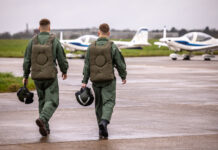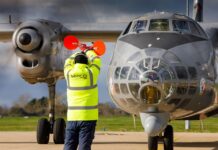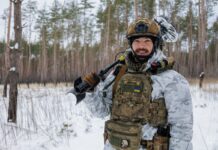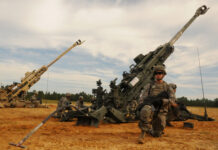Is the Ukrainian Air Force on the Verge of Transitioning from the Soviet-era to Western Fighters?
The Ukrainian Air Force had to face huge challenges at the start of the ongoing large-scale Russian invasion. With their first missile strikes, the Russian Armed Forces intended to destroy the Ukrainian aviation fleet and its air defence network. Moreover, the Ukrainian air defence system is armed with lower-range weapons than the Russian S-400 TRIUMF. The most powerful Ukrainian systems are:
- the S-300PS
- S-300PT
- medium-range BUK-M1
- short-range TOR-M
- S-125
Moreover, the Russian Aerospace Force has a larger number of combat-ready aircraft. Despite this, the Russians failed to completely destroy the multi-layered air defence, so their aviation now operates mainly in the frontline zone and at low altitudes. In general, Russian pilots are reluctant to fly deep into Ukraine’s rear areas, following cases when their aircraft were downed. Furthermore, Russian warplanes launch missile strikes from Russian airspace. Meanwhile, Russian defence officials have repeatedly claimed they have destroyed Ukrainian aviation. In more than a hundred days of war, the embattled nation’s Air Force is still out there, performing combat missions. The current situation raises questions about the future development of the Ukrainian Air Force and what shape it will take.
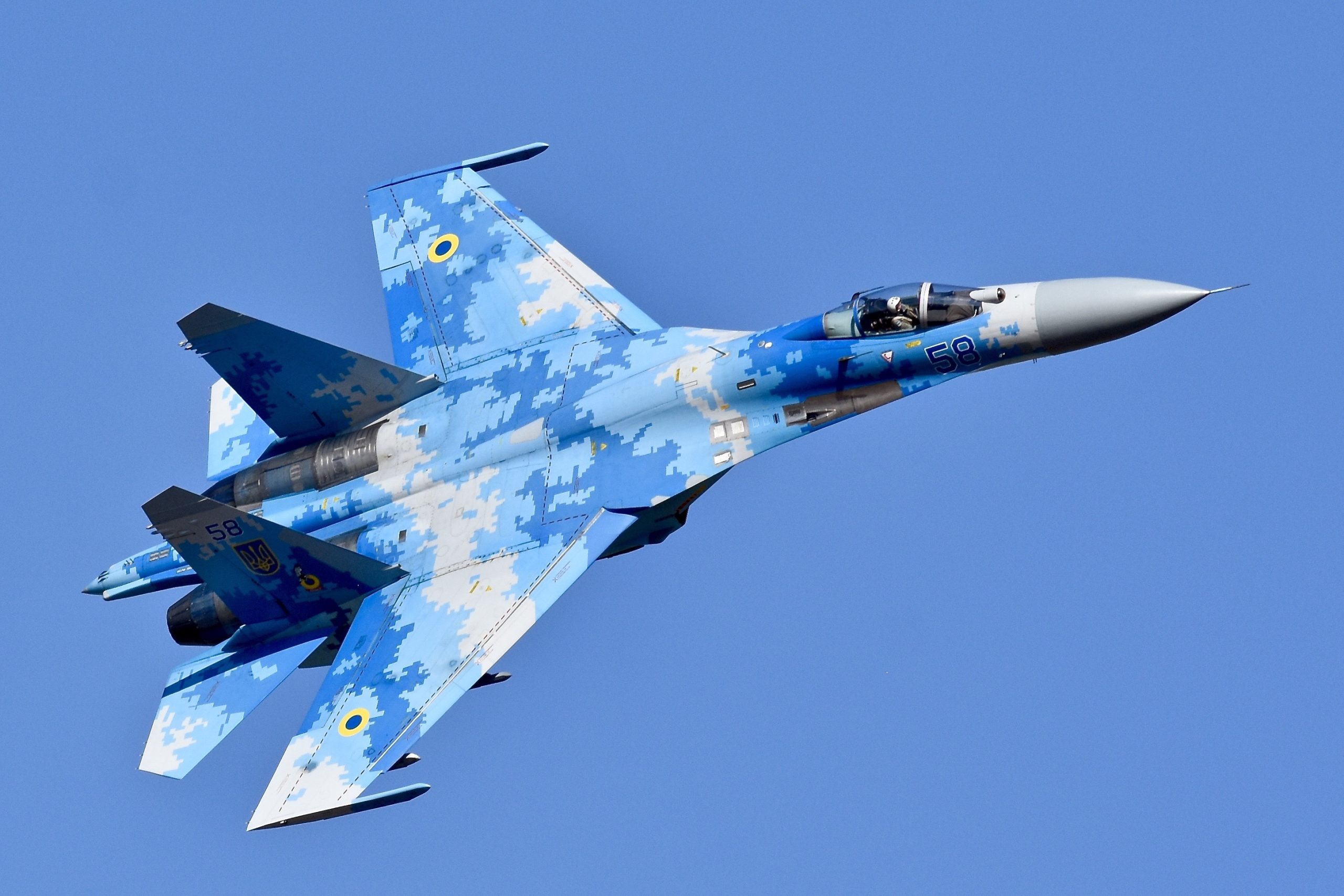
Photo: Pixabay
From Independence in 1991 to 2014
Upon declaring independence, Ukraine boasted of one of the world’s most powerful aviation components, outnumbered only by the United States, Russia, and China. At that time, 669 Air Force units with 122,000 men and women in service were stationed in Ukraine. It was difficult to maintain such a number of aircraft in the grave economic conditions in which Ukraine found itself, while the issue of further modernising the fleet of combat aircraft was seen as an even more challenging task. Moreover, Ukraine has facilities for the independent production of military transport aircraft, but not fighters or bombers. After the fall of the Soviet Union, these production facilities remained in Russia. However, the problem wasn’t seen as acute in the 1990s, but manifested itself more clearly in the early 2000s.
From 2010 onwards, the situation of the Air Force began to gradually improve, including in terms of ensuring repair and extension of aviation service life, more flight hours for pilots, and running military exercises. However, this never solved the main problem – fighter jets and front-line bombers would mainly have their life extended or undergo modernisation, but since 2014, with the start of the Russian aggression, Ukraine has seen its aviation repair capacities reduced sharply, as the nation could no longer cooperate with Russia in the military-technical sphere and it became more difficult to obtain parts that were not produced in Ukraine. Although Ukrainian enterprises did have opportunities to modernise and repair combat aircraft, spare parts still had to be purchased from Eastern Europe, where some Soviet-era fighter jets remain in service.
The Changing Role of the Ukrainian Air Force
With the launch of the Anti-Terrorist Operation (ATO) in the east of Ukraine, the Air Force also became involved. At first, it was military transport aviation and reconnaissance aircraft, but after the downing of the first plane, permission was obtained to employ tactical aviation. These were mainly Su-25 attack aircraft, as well as MiG-29s, Su-27s, and Su-24Ms. At the same time, amid combat losses, Ukraine’s defence companies started to actively modernise, restore, and repair the existing aircraft stock.
After the Minsk agreements were signed, aviation was no longer used in the ATO zone. However, Ukrainian pilots used this time to enhance their skills, including by taking part in multiple military exercises, including jointly with their allies.
The problem of updating the aviation fleet persisted, becoming more and more acute each year. Even by extending the service life of existing fighter jets for another 10 years, the command realised that the need to eventually replace aircraft would not lead anywhere. On 15 May 2020, a long-term defence planning document, the Air Force Vision 2035, approved by the Military Council of the Air Force Command, was adopted. In fact, it was about shifting away from Soviet models and purchasing modern universal fighters, as well as developing an unmanned component. As part of the strategy, it was planned to re-equip the force in three stages with new 4++ generation aircraft, where the first deliveries were to begin as early as 2023-2025. As an option, Saab’s JAS-39 E/F GRIPEN or the F-16 Block 70/72 were considered. Ultimately, the Air Force was set to receive 72–108 multirole fighters.

Photo: Pixabay
Before the Invasion
The plans were ambitious indeed, but with the start of a large-scale war, all plans were torn up, so Ukraine was forced to fight using only existing aircraft. According to the World Air Forces 2022 data by FlightGlobal, there are 43 MiG-29s, 26 Su-27s, 12 Su-24s, and 17 Su-25s in the Ukrainian Air Force’s active fighter and front-line aviation fleet. By comparison, the same report says Russia has:
- 240 MiG-29/35s (plus 31 ordered)
- 131 MiG-31s
- 273 Su-24s
- 192 Su-25s
- 350 Su-27/30/35s
- 125 Su-34s (plus 20 ordered)
- a Su-57
- as well as strategic bombers
According to the General Staff of the Armed Forces of Ukraine, as of early June, Russia had already lost 212 warplanes and 178 helicopters in the ongoing war.
It should be taken into account that the Ukrainian Armed Forces shot down the most capable aircraft manned by hardened high-ranking pilots, whose training takes much longer than one year. For example, one of the pilots of the Su-34 attack aircraft downed over Chernihiv was captured after he survived and ejected. This turned out to be Major Aleksandr Krasnoseltsev, who, before bombing Ukrainian cities, also participated in the Russian bombings of Syria and was even awarded a personal meeting with Bashar al-Assad. There are also cases where even more modern Russian multi-role super-manoeuvrable Su-35 fighter jets were shot down. Once it was a 9K38 IGLA short-range man-portable air defence system and another episode involved air combat with a Ukrainian MiG-29.

Photo: Pixabay
Helicopter Woes
It is worth mentioning the downing of modern Ka-52 ALLIGATOR attack helicopters, worth nearly US$17M per unit, which have been in service with the Russian Army since 2011 and were set to be exported from 2017. As has transpired in combat, these machines suffer from significant vibration when heavily laden with missiles and other weapons, which can lead to the rapid wear of equipment and shorter service life of weapons installed. This was reported by a US-based outlet, The Warzone, citing several anonymous experts in the field of aviation. Also, among the features of the Ka-52, the focus is on the onboard defence system, capable of protecting the vehicle from all types of anti-aircraft missiles, while the armour is supposed to withstand 20 mm shells.
RT footage from the post-battle inspection of a Ka-52 attack helicopter proves that it has issues with armour, which appears to be easily penetrated even by 7.62 mm bullets. Therefore, it is no surprise that a bunch of helicopters of this model were shot down over Ukraine, including with Ukrainian STUGNA-P anti-tank guided missiles and 9K33 OSA short-range tactical surface-to-air missiles.
Prospect of Switching to Western Fighters
So, while outnumbering Ukrainian defence forces, Russian commanders are in no hurry to deploy warplanes deep into Ukraine even in the fourth month of the war, since they do not have full control of the country’s airspace. However, the problem is that, despite having enough experienced pilots, Ukraine is short of modern fighters to counter Russia in the sky.
The situation is similar with their air defence. And it is in this area that Kyiv is on the verge of switching to Western models of weapons. As a Ukrainian pilot (call sign “Juice”) told Radio Liberty, there were cases where six, 12, or even 24 Russian fighters would scramble against one or two Ukrainian pilots at once, thereby completely blocking the manoeuvring space. But even with the outdated fighters available, Ukrainian pilots, in close coordination with air defence capabilities, provide a deterrent for Russian air operations and prevent the Russians from doing whatever they want in the air domain.
According to the Russian Ministry of Defence, as of early May, they have allegedly downed 149 Ukrainian warplanes and 112 helicopters. The problem with these statistics though is that they represent even more units than Ukraine initially had at the onset of Russia’s invasion, including inactive aircraft. Despite victorious reports by Russian defence officials, the Ukrainian Air Force apparently remains a problem for the Russians.
Options for Ukraine
Ukraine has now reached a stage where the transition to non-Soviet fighter jets and Western weapons in general is no longer an element of a 10-year strategy, but an important demand requiring rapid decision-making. According to available data, it is quite possible that these could be F-16 fighters. After all, the lend-lease deal greenlighted by the US administration allows Ukraine to look into this option optimistically. These may be new upgrades of the F-16V Block 70/72, since in 2020 the Pentagon signed a large-scale contract with Lockheed Martin for 1,000-1,500 F-16Vs intended for foreign armies, which will be distributed under the Foreign Military Sale programme.
Also, in early May, it became known that the Ukrainian authorities in their negotiations with partners called for them to launch training programmes so that Ukrainian Air Force pilots could start mastering Western aircraft as soon as possible. After all, as soon as it became clear that Russia was opting for a long war, all talk about giving Ukraine exclusively Soviet-era military equipment became irrelevant. The situation is developing in such a way that now the need for the rearming of Ukraine’s Air Force has become much more urgent than presented in the Air Force Vision 2035 master plan.
A similar situation is developing with air defence. For example, the latest German air defence system IRIS-T (Tail/Thrust Vector-Controlled Infra Red Imaging System), developed by Diehl Defence, can be delivered to Ukraine this autumn. It is capable of shielding an area the size of the capital, Kyiv. Supply plans have been confirmed by German Chancellor Scholz. According to Ukraine’s Ambassador to Germany, within three to four years, Ukraine will be able to install such systems around large cities and critical infrastructure objects.
Allied Support
It should also be mentioned that, as per dpa agency sources, an informal agreement may exist between NATO allies to stop short of supplying Ukraine with certain types of weapons, including main battle tanks and fighter jets. This should apparently minimise the risk of a direct military confrontation between NATO and Russia, since the latter may allegedly see such supplies as evidence that the bloc has joined the war. Firstly, it should be borne in mind that there is no official NATO statement on the issue and, secondly, the West is already supplying heavy weaponry, so Russia may as well invent any pretext to accuse anyone, if the situation so requires.
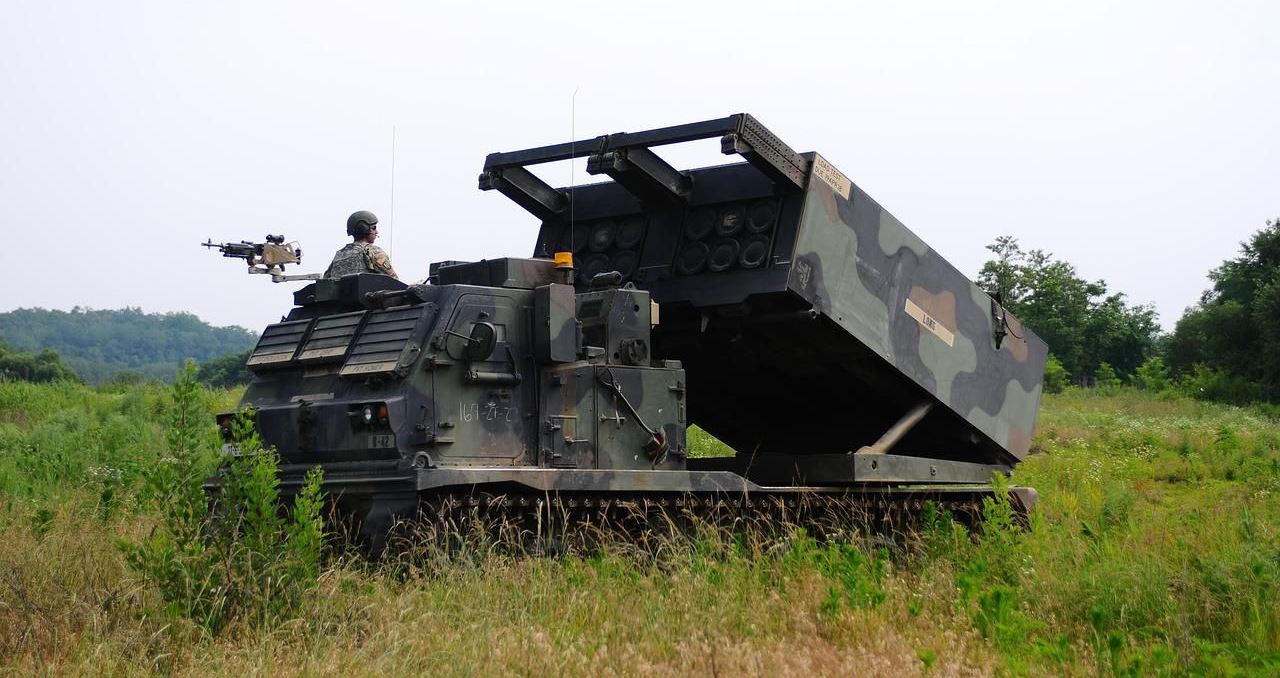
Photo: Pixabay
Moreover, the Alliance previously stated that the decisions on the supply of certain weapons are made by member countries independently, beyond NATO’s auspices. And the meetings of defence chiefs of more than 40 nations in Ramstein, Germany (this month, the third such meeting will be held in Brussels) consider specific requests from the Ukrainian military in accordance with the developments at the front, where Ukraine has recently stated an acute need for artillery, self-propelled howitzers, as well as M270 and HIMARS M142 MLR systems to counter massive Russian artillery fire. The issue of aviation supplies requires more detailed research, at least due to the need for appropriate infrastructure, maintenance personnel, and trained crews. However, in the future, NATO needs capable Ukrainian aviation and compatible air defence systems, which will become an additional defence element on NATO’s Eastern flank.
Alex Horobets







